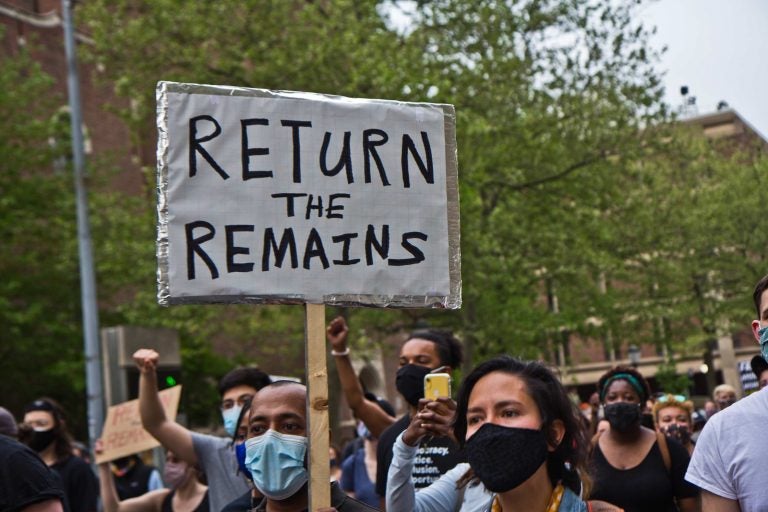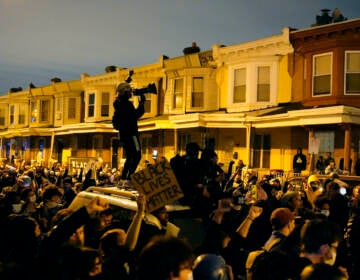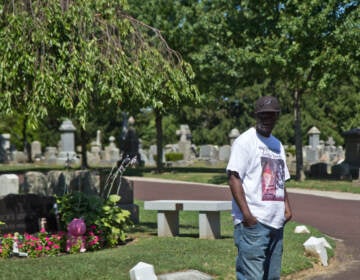The MOVE bombing was traumatic. Learning what happened to the bodies is, too.
After the MOVE bombing, the city of Philadelphia held some of the remains for 36 years. Then the answers kept changing, and things got infinitely worse.

Protesters demonstrated in April outside Penn Museum over its handling of MOVE bombing victims' remains. (Kimberly Paynter/WHYY)
Each year, when the conversations concerning the MOVE bombing take place, I experience emotional conflict. But this year, when I learned that the City of Philadelphia held onto some victims’ remains for more than three decades, I was livid.
As always, my anger over the killing of 11 Black people, including five children, is immediate. But the trauma of reliving that day is like a slow drip, eating away at me as the hellish image of the fire is seared into my consciousness. It’s painful to know that the police and fire department, under the administration of the city’s first Black mayor, bombed Black people and allowed the fire to burn. Beyond the anger and pain, however, I am perplexed. I simply can’t figure out why the City transferred some of the remains to the Medical Examiner’s Office, and then to the University of Pennsylvania, without the families’ knowledge.
Were the remains regarded as trophies, like those that are taken by big game hunters? Were they experimented upon, like the cells of a Black woman named Henrietta Lacks? Or was it the worst possibility of all — that these Black bodies were not worthy of the respect that would be given to the bodies of white people? I fear that it’s the latter. That’s what makes this so offensive, and so hurtful, and so wrong.
To make matters worse, former Health Commissioner Thomas Farley ordered the Medical Examiner to cremate the remains in 2017, and did so without telling the family. When the order was discovered, Farley was forced to resign. But after being told that the remains were cremated, the city did an about-face and said the remains were not destroyed, after all.
Members of the MOVE family were understandably angry.
“We don’t trust anything they are saying about these remains,” Janine Africa told NBC 10. “You changed the story four times.”
She’s right. For his part, Mayor Jim Kenney says the City of Philadelphia is reviewing procedures at the Medical Examiner’s Office, especially with regard to racial equity. He says the MOVE members’ remains will be handled respectfully moving forward.
If the mayor follows through on his promise to treat the remains of Black people respectfully, he will be among the first to do so.
Philadelphia has historically treated Black bodies with utter disrespect — even going so far as to build on top of them. A Black cemetery was found beneath a car wash near the former location of the Monumental Baptist Church in West Philadelphia. Another was found beneath the Queen Lane public housing high-rise when it was imploded in 2014. Such sites exist because racism made burial a strictly segregated affair in Philadelphia and beyond, while also making it possible to ignore the sanctity of Black remains.
More important than the history, however, is what’s happening in the moment, and in the moment, I have questions. Why did the city hold on to the remains of MOVE members for 36 years? Why did Thomas Farley order them to be cremated? Why didn’t the cremation happen if Farley gave that order? And most of all, why hasn’t anyone been held accountable for killing 11 Black people back in 1985?
The members of MOVE and the people of Philadelphia deserve answers. We want Black bodies to be treated with dignity in life, and we want our bodies respected when we’re gone.
WHYY is your source for fact-based, in-depth journalism and information. As a nonprofit organization, we rely on financial support from readers like you. Please give today.







